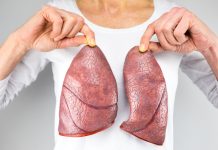Prana is often described as the life energy. And that is true on one level. But as with all things in existence, there are more subtle aspects to this.
There are actually five main pranas, and further sub-pranas. These five are known as the pancha vayu. Let’s look at these in order of how strongly they are anchored to the body. Pranas keep the body alive, and so this order correlates to how the various pranas withdraw from the body when someone dies.
- Samana Vayu is the function that assimilates incoming energy. We commonly associate this with digesting food but it also operates for example in the lungs where breath is absorbed. It is associated with agni, or fire and is responsible for the heat in the body. Ailments with this prana include gaseous swelling, abdominal discomfort, weak metabolism, as well as food allergies and mental disturbances with respect to food.
- Prana Vayu refers to the various ways energy enters the body. Mainly that is associated with inhalation but there are also the senses as well as mental impressions. Ayurveda sees all the senses as “mouths” of the body through which energy enters.
- Udana Vayu is a little difficult to conceptualize but it refers essentially to the upward movement of pranic energies or you might think of it as the lightness of the body. Disorders with Udana includes illnesses of the throat, neck and head.
- Apana Vayu refers to the downward and outward movement of energy which includes exhalation, menstruation, childbirth, ejaculation, urination, and elimination of wastes. Disturbances with Apana manifest as diseases of the bladder, colon, immune deficiencies. If both Samana and Apana are disturbed, we see reproductive and urinary disorders.
- Vyana Vayu distributes the pranic energies and creates flow. It is the inductive force that moves the blood, sweat, lymphatic and nervous impulses. It is invigorated by bending the body downward and upward, as well as side to side – which is why we see these movements in yoga practices.

One of the most important practices in maintaining a balanced pranic state is alternate nostril breathing which aligns the solar and lunar nadis (or channels). A careful examination of all of the yogic practices will yield clues as to which of the pranas are being worked on. For example deep inhalation, holding, deep exhalation, holding are affecting the Vyana Vayu.
There are also five Upa-Pranas which regulate important functions in the body.
- Naga – Burping to prevent gas formation, triggering vomiting for indigestion, as well as dissolving blockages of Samana Vayu.
- Kurma – Blinking to assist the eye health, and the operation of the eye lids.
- Devadatta – Yawning to reduce tiredness and lethargy.
- Krikala – Sneezing to clear the respiratory system and ease headaches caused by energy blockages in the head and neck. This is why sneezing should not be suppressed.
- Dhananjaya – Heart valve operation is the underlying function, and when disturbed, we see heart attacks and cardiac arrhythmia.
The pranic energies are affected by not only the food we eat, the air we breath, and the environment but also by our mental patterns of thought and the associated actions we perform. That is why yoga begins with rightful thought and rightful action, as seen in yama and niyama, even before we get into asana and pranayama practices.
47 Most Famous Motivational Quotes of All-Time
49 Greatest Love Quotes
37 Inspirational Quotes that Will Change Your Life






























